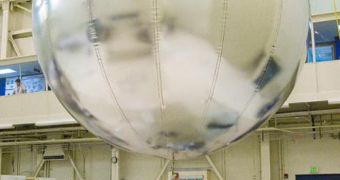Though not as common today as in the past, blimps play an important role in weather assessment, as well as in conducting various types of scientific investigations. They can also be used for aerial surveillance and reconnaissance, as well as for taking a look at places that are not normally easily accessible. Astronomers recently figured out that they too could use these aircrafts in studying other planets. Missions to Mars, Venus, and even the Saturnine moon Titan could become a reality given sufficient funding, and the scientific return of such flights would be huge Space reports.
Balloons hold the same promise, experts say. They too can fly for considerable distances across all types of terrains, providing on-the-fly scientific capabilities to interested teams. Other than a small data delay, there would be no difference between the way blimps and balloons function on Earth, and how they would operate in an extraterrestrial environment. Scientists say that minor tweaks are required in order for these aircrafts to fly in different atmospheres than our own, but add that this is completely doable with existing technologies. In addition, conducting investigations in such a manner would be more efficient and less expensive then sending intricate, high-tech orbiters and landers.
One of the primary advantages of using autonomous, self-steering blimps and balloons is the fact that they can cover incredibly-large swaths of land without ever having to touch down, or refuel. Orbiters are located in relatively-fixed orbits around a planet or moon, landers and rovers are dependent on solar energy, but crafts such as these could fly for much longer periods of time easily. By using them, missions which are now considered to be the exception, such as Spirit and Opportunity's kilometers-long treks, could become the norm, and even be exceeded several times over. Balloons and blimps could see to it that large swaths of land, stretching for hundreds of miles, could be covered continuously, and at fairly high speeds.
An added benefit would be the fact that volcanoes and lakes could be analyzed with increased accuracy. At this point, rovers cannot climb them, and orbiters are too high to see them in high-resolution. Even if a lander is brought down on a volcano, the machine cannot move, or does so only over short distances. But floating robots could easily cover such landscape features on numerous occasions, and from just the right angle and height. “A balloon is a platform to carry scientific instruments to places you couldn't get to otherwise, a way of covering a relatively large distance in a very short amount of time,” explains NASA's planetary balloon effort leader Jeffery Hall, who is based at the space agency's Jet Propulsion Laboratory, in Pasadena, California.
But there are also challenges associated with deploying such vehicles to other worlds. For example, a “rover can sit still and be safe. Aerobots are always moving, so it's a different kind of operation. You can't say 'Stop, give me a couple days to figure out the answer to your problem',” Hall concludes.

 14 DAY TRIAL //
14 DAY TRIAL //